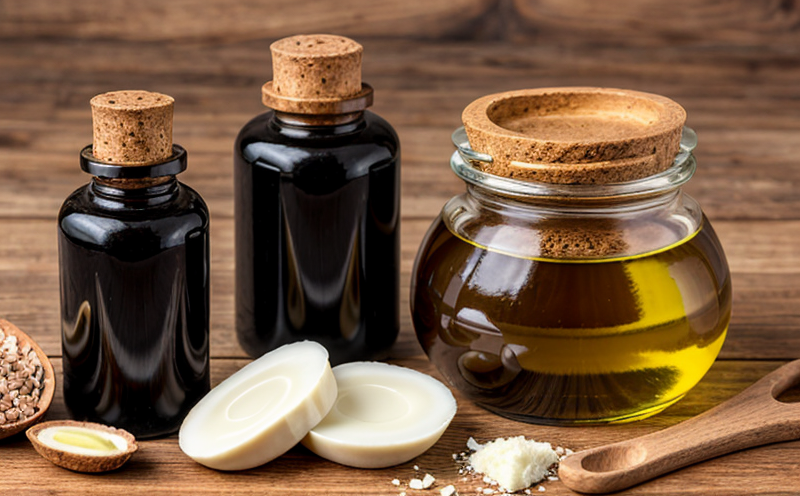USP Oxidative Stability Profiling in Oils
The USP Oxidative Stability Profiling (OSP) is a critical analytical method used to assess the oxidative stability of fats and oils. This test ensures that the product maintains its quality, safety, and shelf-life over time. For food manufacturers, ensuring these properties is essential for delivering safe products to consumers.
During this procedure, we simulate real-world conditions that may cause the oil or fat to degrade. By measuring the rate of oxidation under controlled conditions, we can predict how the product will perform in storage and during its shelf life. This information is vital for quality managers and compliance officers looking to ensure their products meet regulatory standards.
The test involves exposing samples to various stressors such as heat, light, and oxygen, which are factors that contribute to oxidative degradation. Using advanced analytical techniques like high-performance liquid chromatography (HPLC) and gas chromatography-mass spectrometry (GC-MS), we can determine the extent of oxidation by quantifying specific compounds.
Understanding the oxidative stability is crucial for R&D engineers working on new formulations or reformulations. By identifying potential weak points early in development, they can design products that are more resilient to environmental factors. For procurement teams, this service helps them select suppliers who adhere to stringent quality control measures, ensuring consistent product quality.
The process begins with the precise preparation of the oil sample according to USP guidelines. This involves homogenizing the sample and adjusting its temperature to simulate real-world conditions. Once prepared, the sample is subjected to controlled oxidation conditions. The rate of oxidation is monitored over time, allowing us to establish a baseline for stability.
After completion of the test, detailed reports are generated which include quantitative results, graphs showing changes in key compounds, and recommendations based on our findings. Compliance officers can use these reports to ensure their products meet not only USP standards but also other relevant regulations such as EU or FDA guidelines.
Applied Standards
| Standard | Description |
|---|---|
| USP | The official United States Pharmacopoeia monograph for oxidative stability profiling. |
| ASTM D942 | American Society for Testing and Materials standard method for oxidation stability of fats, oils, and greases. |
Scope and Methodology
The scope of this service is to provide comprehensive oxidative stability profiling according to the USP guidelines. This involves a series of controlled experiments designed to mimic real-world conditions that may lead to oxidative degradation.
- Precise preparation and homogenization of oil samples.
- Exposure to controlled oxidation conditions including heat, light, and oxygen.
- Monitoring the rate of oxidation using advanced analytical techniques such as HPLC and GC-MS.
- Data analysis and reporting based on quantified results.
Environmental and Sustainability Contributions
- Reducing waste by optimizing product shelf-life, thus minimizing food spoilage and waste.
- Enhancing sustainability through the development of longer-lasting products that require fewer replacements or reorders.
- Promoting responsible sourcing practices by ensuring suppliers meet strict quality control standards.
- Supporting regulatory compliance which, in turn, helps protect public health and safety.





